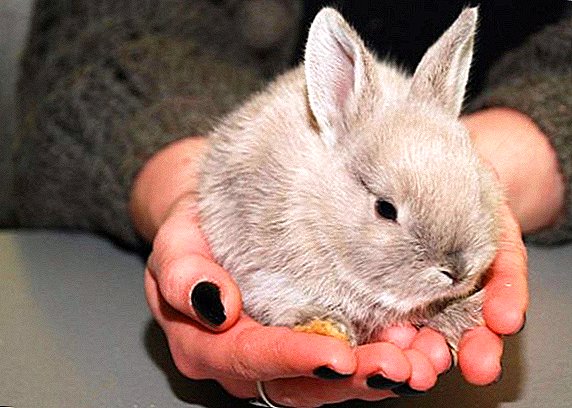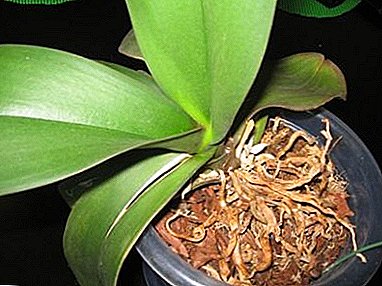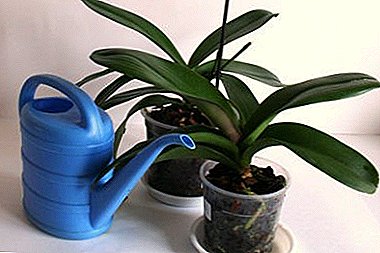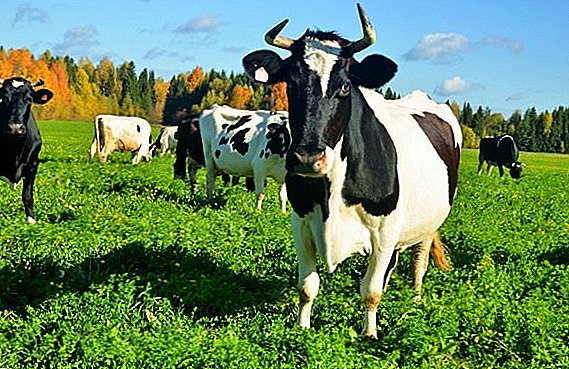 Diseases of cattle occur at least the ailments of other farm animals, so any farmer just needs to know about the rules of first aid in various situations. For example, abscess is not uncommon, which not only delivers a lot of trouble to the owner, but is also painfully tolerated by the animals themselves, and we will explain further what it is and how it is treated.
Diseases of cattle occur at least the ailments of other farm animals, so any farmer just needs to know about the rules of first aid in various situations. For example, abscess is not uncommon, which not only delivers a lot of trouble to the owner, but is also painfully tolerated by the animals themselves, and we will explain further what it is and how it is treated.
What is a cow abscess
The term "abscess" is commonly understood as an abscess or abscess that appears on a specific part of the cow's body. This is a pathological neoplasm, presented in the form of a separate cavity filled with purulent masses, which appeared as a result of purulent inflammation of loose tissue or other organs and tissues. There are several varieties of such boils:
- in acute, subacute and chronic stages of development;
- infectious and aseptic;
- deep and superficial;
- benign and malignant;
- metastatic, cold and natous.
The main causes of
 The appearance of an abscess in cattle can be explained by the negative effect of suppurating microorganisms caught in tissues, often representatives of the group of streptococci, staphylococci, sticks of blue pus, cryptococci, tuberculosis bacilli and some other microscopic pests. They can get into the body of a cow in several ways:
The appearance of an abscess in cattle can be explained by the negative effect of suppurating microorganisms caught in tissues, often representatives of the group of streptococci, staphylococci, sticks of blue pus, cryptococci, tuberculosis bacilli and some other microscopic pests. They can get into the body of a cow in several ways:
- together with certain chemicals (for example, kerosene, turpentine, or croton oil trapped in an injured area of skin);
- when receiving mechanical damage during grazing (even a small scratch can be an entry point for pathogens);
- when infected with the blood of an animal during a haircut, injection or other medical manipulations (this method of infection is much less common).
Consider all the features of the main diseases of cows: ketosis, udder edema, leukemia, pasteurellosis, mastitis and hoof diseases.
Whatever the reason for the appearance of an abscess, over time you simply cannot ignore it, because there are many signs of its presence. 
How manifest
The owner of a cow may not notice the first signs of an abscess, because farmers do not always carefully examine their nurse for reddening of the skin. However, after only a few days, the superficial abscess forms a sharp end, with visible signs of the presence of pus there. Of course, clicking on this place gives the cow only pain, which will be noticeable by its behavior.
When pressed, the owner can feel how the accumulated liquid oscillates inside, and the reddened area itself will give off heat.
You will probably find it useful to know how much weight a cow has and what it depends on.
After infection by pathogenic microorganisms, signs of their presence are observed throughout the body of the sick animal: the general condition of the cow deteriorates sharply, the body temperature rises and breathing becomes more frequent. Naturally, against the background of these processes, it loses all interest in food and lays most of the time.  Depending on the type of abscess, there are several individual symptoms characteristic of each of them:
Depending on the type of abscess, there are several individual symptoms characteristic of each of them:
- ulcers that have ripened on the surface of the body are less painful, pass faster and can be opened independently, without surgical intervention;
- deep abscesses are much more difficult to detect, since all the pus enters the tissues, causing more painful sensations (they often become the cause of a "silent infection", which manifests itself after the experienced stress of the cow or a cold disease);
- if you are dealing with a benign formation, then after opening it, beige purulent discharges with a slightly sour aroma will appear (such boils are sometimes delayed by the film and can be on the body of the animal for quite a long time, becoming chronic);
- A malignant abscess is characterized by a large and painful lesion, the pus from which breaks through the shell and quickly turns into phlegmon (in this case, the pus masses are dark and have a strong and unpleasant smell, indicating a large amount of dead tissue);
- the so-called "cold abscess" ripens much longer than the previous options, its symptoms are vague and do not affect the health of the cow in any way, but after breaking through the wound pus will constantly flow, forming a deep hole with time;
- incontinent abscess is somewhat similar to the previous version, but only its formation is explained by the transfer of purulent masses from the cold form to the nerves and vessels (usually the result of the development of tuberculosis);
- Metastatic abscesses appear on various parts of the cow's body as a result of the movement of microbes along with lymph and blood from the site of the initial lesion (often pathogens enter the stomach, intestines, brain and even the heart of a sick animal - this is the most severe form).

How to treat a cow abscess
The final diagnosis can be made only by a veterinarian, who will prescribe an adequate treatment. Nevertheless, this does not mean at all that you will not be able to undertake anything before his visit, it is not for nothing that they give out first-aid and medical assistance.
Did you know? Many experts distinguish a kind of aseptic abscess, the appearance of which is explained by the ingestion of chemicals (for example, turpentine) under the skin. Under the influence of this substance, many microbes die quickly, therefore, in the olden days, pus enzymes were removed in this way. It was enough to put a few cubes of turpentine under the skin.
First aid
Finding an abscess on the body of the cow, it is advisable to immediately call the veterinarian (especially if the lesion is extensive). Before his arrival, it is necessary to ensure maximum rest for the animal, temporarily defining it in a separate room with clean litter. If your nurse is peaceful and does not show signs of aggression, then you can try to give her first aid:
- for a start, it is worthwhile to warm the affected area with water or alcohol lotions, as well as poultices of hay dust or heated medicinal mud (the abscess is heated until it becomes softer and not so elastic);
- in order to alleviate the condition of the cow, you can feed Sulfadimezin by mixing it with food.
 Cold compresses, massage and other actions that can provoke the migration of microbes throughout the body should be excluded.
Cold compresses, massage and other actions that can provoke the migration of microbes throughout the body should be excluded.Unfortunately, the natural process of insemination of cows is long and not always effective. Read about artificial insemination of cows.
Specialized assistance
Each doctor prescribes an abscess treatment based on the general condition of the animal and the specific type of problem itself. So, in light forms, it is enough to apply Novocain blockade, chipping the affected area with a mixture of Novocain and Penicillin.
If possible, it is necessary to introduce such an injection right under the abscess, in the zone of contact between the sick and healthy part of the body. After such preparatory measures, it is possible to open the abscess in one incision, which is very important for the complete release of pus. 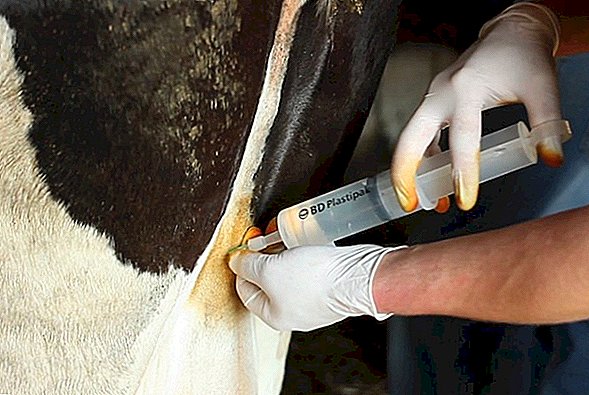 We make an injection right under the abscess. If the abscesses are large, all the actions taken are slightly different. At the initial stage, the purulent masses are pumped out with the help of a rubber tube (pretreated with antiseptics), and then the open wound is treated with conventional means on the basis of antibiotics or conventional wound healing ointments.
We make an injection right under the abscess. If the abscesses are large, all the actions taken are slightly different. At the initial stage, the purulent masses are pumped out with the help of a rubber tube (pretreated with antiseptics), and then the open wound is treated with conventional means on the basis of antibiotics or conventional wound healing ointments.
Farmers are advised to familiarize themselves with the best breeds of cows: Belgian Blue, Hereford, Simmental, Dutch, Holstein and Ayrshire.
Deep abscesses also have to open. A sterile needle is inserted into the cavity of the abscess, with the help of which the wound is freed from dead cells. After that, stop the blood, and the affected area is treated with a solution of chloramine or normal peroxide.
The popular preparations for the treatment of abscess in cows include the following compounds:
- "ASD-3" (100 ml);
- Balm Dorogova (No. 10);
- "Desi Spray" (100 ml);
- Gent-100 (100 ml).
 Also in this matter, the well-known “Vishnevsky Ointment” beloved by many, which costs much less than modern-fashioned drugs and is not inferior to them in terms of efficiency, has proven itself well.
Also in this matter, the well-known “Vishnevsky Ointment” beloved by many, which costs much less than modern-fashioned drugs and is not inferior to them in terms of efficiency, has proven itself well.Agree that milking machines simplify the milking process and increase the amount of milk production. Consider in more detail all the features of this design and its types.
Preventive measures
Abscesses do not appear suddenly, therefore the speed of their detection plays an important role. To prevent the unpleasant consequences of the growth of ulcers, it is important to remember the following preventive measures:
- every day after the arrival of the cow from the pasture, it is necessary to examine it carefully, and sometimes even feel it with your hands (the suppuration manifests itself as a seal);
- small or especially large wounds should be immediately treated with special antiseptics to eliminate the possibility of infection;
- clean bedding should always be in the place where the animal lodges, precluding the possibility of the reproduction of pathogenic microorganisms in its layers;
- When sending a cow to a pasture, it is advisable to choose open areas, without thorny bushes and unpleasant insects, such as ticks.
 Cows graze in open areas If the suppuration is already well marked - do not self-medicate, because it can only aggravate the condition of the animal. Try at least by phone to consult with a specialist and to prevent the complication of the condition of the cow due to the further development of the abscess.
Cows graze in open areas If the suppuration is already well marked - do not self-medicate, because it can only aggravate the condition of the animal. Try at least by phone to consult with a specialist and to prevent the complication of the condition of the cow due to the further development of the abscess.

